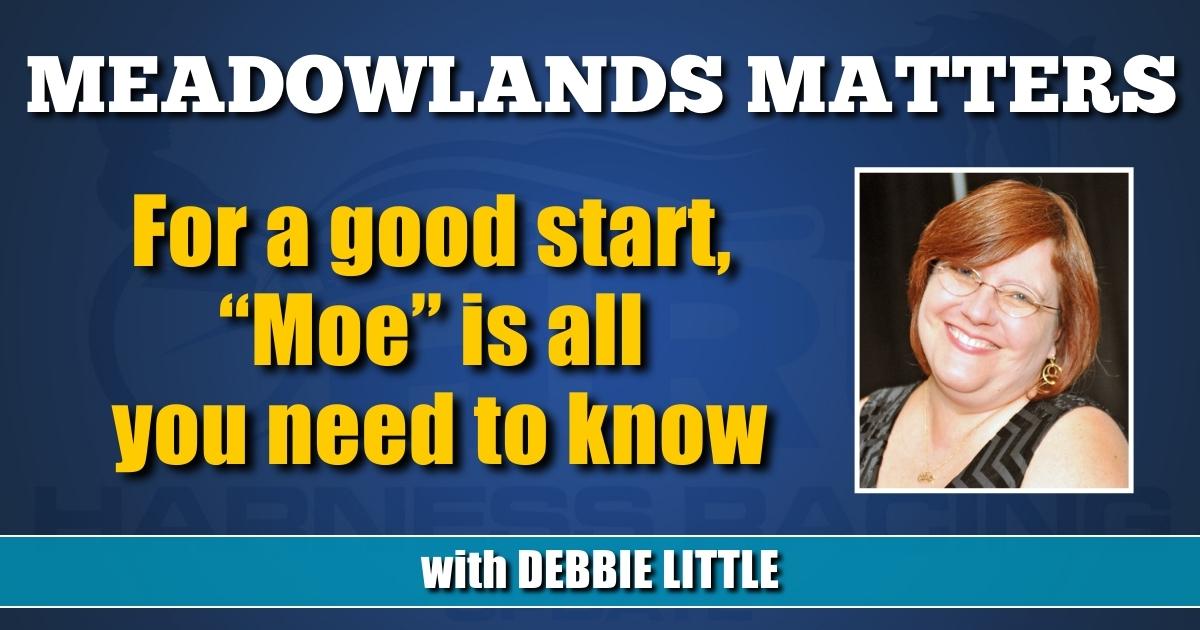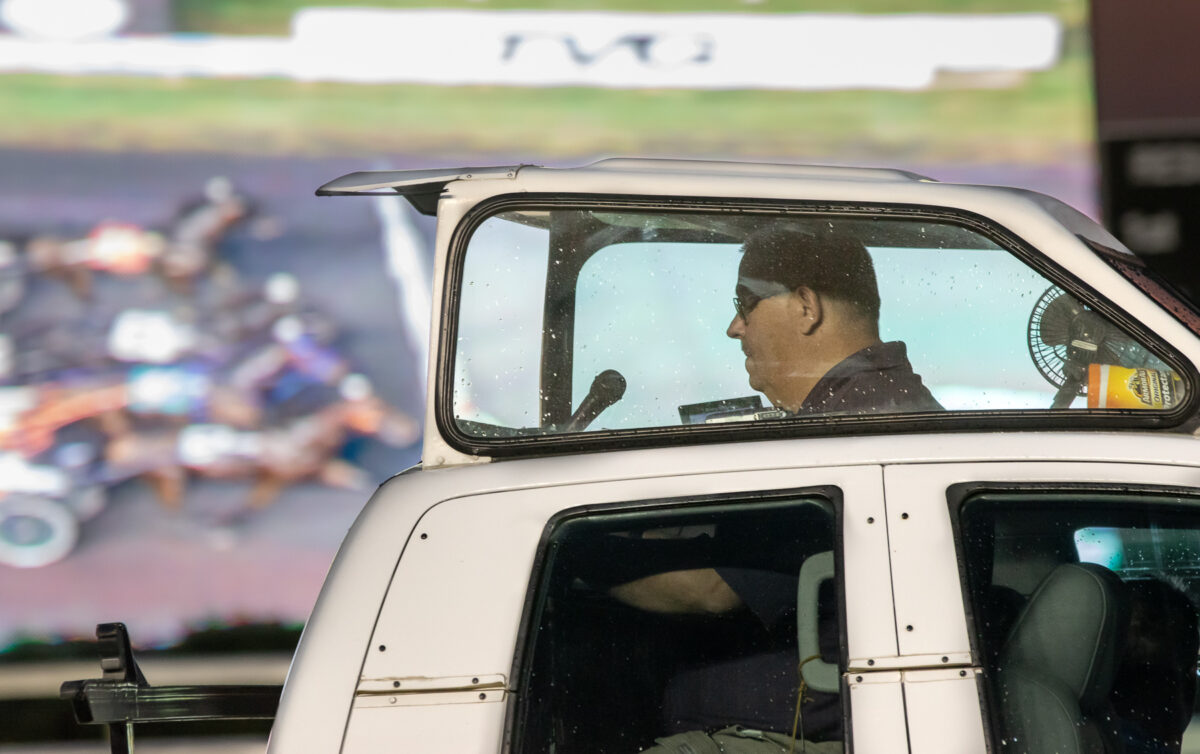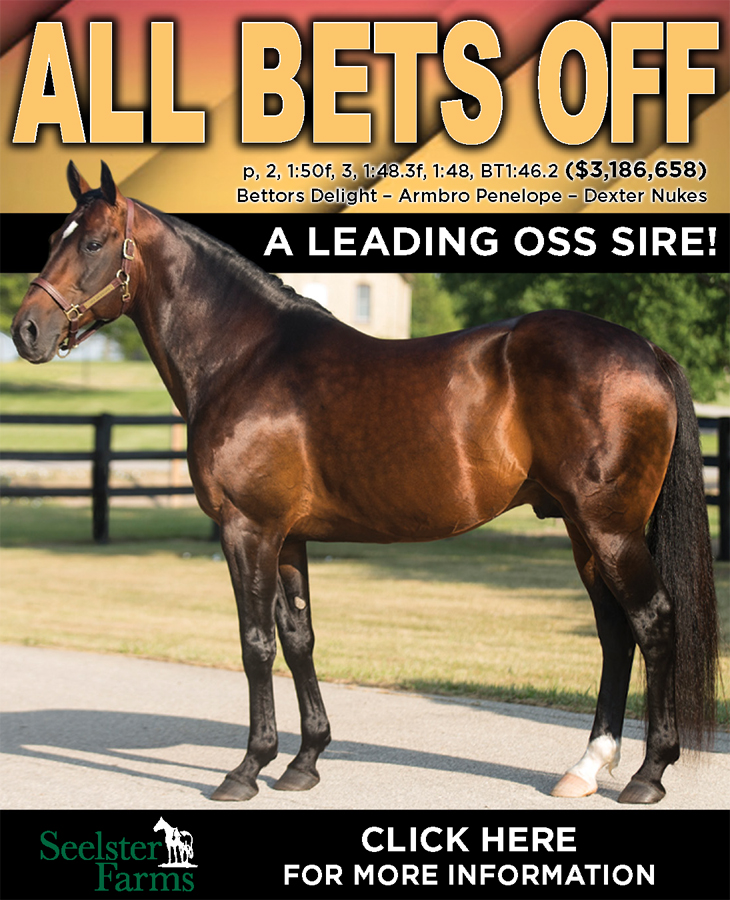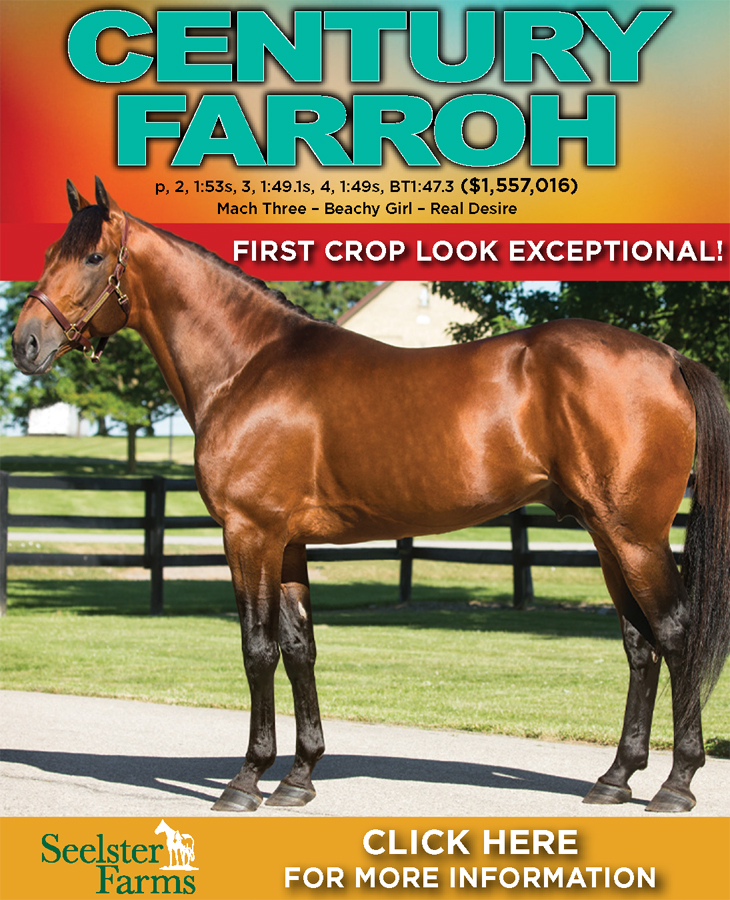

For a good start, “Moe” is all you need to know
The Big M’s starter is a model of consistency.
by Debbie Little
The great philosopher Jeremy Bentham once said: “The rarest of all human qualities is consistency.”
The Meadowlands starter, Merle LaFountaine, known by all as “Moe,” is indeed that rare human because consistency is at his core.
“I tell everybody that I train [to be a starter] that you have to be consistent every time you start a race,” LaFountaine said. “If you’re consistent with what you do and how you do it, the driver will adapt the horse that he’s driving. So, you have to do the same thing every time.
“I tell everybody, I have never left a horse a day in my life because I do the same thing. Now, have I had horses not make my gate? Yes, but it’s because his driver’s not paying attention.”
LaFountaine, 56, grew up in the business in Michigan.
“My dad raced ponies when I was a kid, he translated over to the standardbreds when I was probably 9 or 10 years old,” LaFountaine said.
It was also in his youth that Merle became Moe.
“I got the nickname Moe when I was little, and I went by Moe my whole life,” LaFountaine said, adding with a laugh, “I was named after my grandpa, and the reason I got nicknamed Moe was because I was the baby of 11 and they said ‘No mo.’”
Growing up, LaFountaine worked for different trainers and stables, but a few years after he married his wife, Jennifer, in 1994, they bought their first farm and opened a public stable. Things were good for the LaFountaines in the Great Lakes State up until 2008.
“I moved out to the East Coast because Michigan went to hell,” Moe said. “I looked up one day, I had 30-some horses; the next day I looked up and I’m down to like 12. The owners were selling fast. So, we made the move out here in 2008 because my wife got offered a job as a charter at Chester [now Harrah’s Philadelphia] the second year they were open.”
Moe raced a small stable of his own at the track in Chester, PA, but after his wife went to school to be a judge and she was hired to be one at Harrah’s Philly, he could no longer race there.
Around 2016, Moe told his wife that he was going to go get his starter’s license.
One of the requirements to get a starter’s license is that you have to drive the starting gate for at least a year. When Moe was in his early 20s, he drove the starting gate at a county fair.
“County fairs will teach you a lot about starting,” he said. “When you’re driving the car, you gotta go a little wide to miss a pole that’s on the inside, but as soon as you get past that, you gotta get back down, because you gotta miss the pole that’s on the outside of the track.”
Moe said starting is one of the hardest licenses to get and that T.C. Lane, the USTA’s chief operating officer/director of registry would back him up on that.
“Just because you pass a test doesn’t mean you’re getting a license for starting, because it’s a dangerous piece of equipment,” Moe said. “And when [T.C.] gives a license, he wants to know it’s being given to somebody that’s going to use a lot of common sense.
“T.C. said, ‘You know, starting is like flying a plane. A lot of people can fly planes. They can take off and they can land. It’s the guy that knows what to do when something goes wrong. That’s what makes a good starter.’ And there’s a lot of truth to that. You can’t panic in a situation.”
Moe said once he got his license things just took off.
First, he was the starter at Maryland’s Rosecroft Raceway, and then, when The Meadowlands long-time starter Danny Dale retired, he was offered that job.
“Your better starters are ex-horsemen,” Moe said. “As a starter, you have to read the field. You have to be able to read what’s going on when they’re coming to you. It’s hard to teach somebody that comes off the streets how to start races.”
Moe said that probably 90 per cent of the spectators don’t know that the starter controls the speed of the car, and instead think it’s his driver at The Big M, horseman Johnny DeSimone, Jr., that does it all.
“There’s a lot of horsemen that don’t even realize it that have never had the luxury of being in the starter car,” he said. “[DeSimone’s] steering, but he’s not driving.
“I prefer to have a horseman [as a starter car driver] because, God forbid something happens on the racetrack, a horseman knows how to help untangle a mess or deal with a situation better than just a regular person does.”
He said what people don’t realize is that the starter car driver is the other half of the starter. The driver is his front eyes, and he’s the driver’s back eyes and they have to communicate and do it very well.
“Here’s a prime example,” Moe said. “I was starting a race at Rosecroft one night. I’ve got a field of nine horses behind the gate, five-eighths mile track, and we just get past the half pole through the turn and all of a sudden, I hear my driver, holler, ‘deer, deer, deer.’ I said, ‘I heard you the first time.’ He said, ‘No, three of them just come underneath the fence.’ And I said, ‘Are we going to hit them? He said, ‘I think so.’
“Well, I can’t stop because I’ve got nine horses behind the gate. I hollered at the drivers and I said ‘Look out, there’s deer on the track. I’ve got to back out of it.’ I let off on [the throttle] as much as I could without totally messing everybody up. And we got lucky and nothing happened. But, you know, we couldn’t slam on the brakes. That’s your first instinct when you see a deer is hit your brakes. But we can’t do that. And I just can’t let up completely off the throttle, because we were up to 26 miles an hour probably when this happened. So, you’ve gotta have somebody that works with you. I can’t see the deer coming because I’m looking backwards.”
For Moe, one of the most important things that he deals with as a starter is time.
“When that clock [on the infield] goes to a minute, I call the judges; 30 seconds later, I give a call to the drivers,” he said. “So, when I give 30 seconds, that means 30 seconds, if they gotta have more time, they gotta know it before a minute to post. What people don’t realize is drivers depend on you to go when you’re going to go, because they might have a horse that they’ve got to keep quiet, and get him quiet at the right time, or they’ve got to get him revved up and get him revved up at the right time. So, then all of a sudden, at the last second, you throw time up there, it messes all their stuff up.
“It’s a working relationship. I need their respect, but also, I have to give them respect, too. It’s building trust between each other.”
For driver Scott Zeron, one of the top contenders for 2023 Driver of the Year honors, Moe is a very good starter.
“I think being a good starter is just having a model of consistency,” Zeron said. “All I really want is a consistent starter, whether you’re fast or slow, if you do the same thing, I’ll adapt to the way you start just as long as you’re consistent and Moe is consistent.”
Moe said people have asked him if he gets nervous when he’s starting the Meadowlands Pace or the Hambletonian because they go for so much money.
“I said, ‘There’s a non-winners of $3,000 pacer out there that means more to that guy that owns that horse then sometimes it does to the guy that owns the Meadowlands Pace horse, because the guy that owns the Meadowlands Pace horse, he’s going to eat tomorrow whether his horse does any good or not.
The guy that’s got the non-winners of $3,000 pacer, he might not be able to buy dinner tomorrow if he doesn’t get some money. So, a fair start to him is just as important as it is to the guy that’s going in the Meadowlands Pace and that’s the way I treat it.’
“It makes no difference to me what class they are. My goal is to make sure everybody gets a fair start.”
















